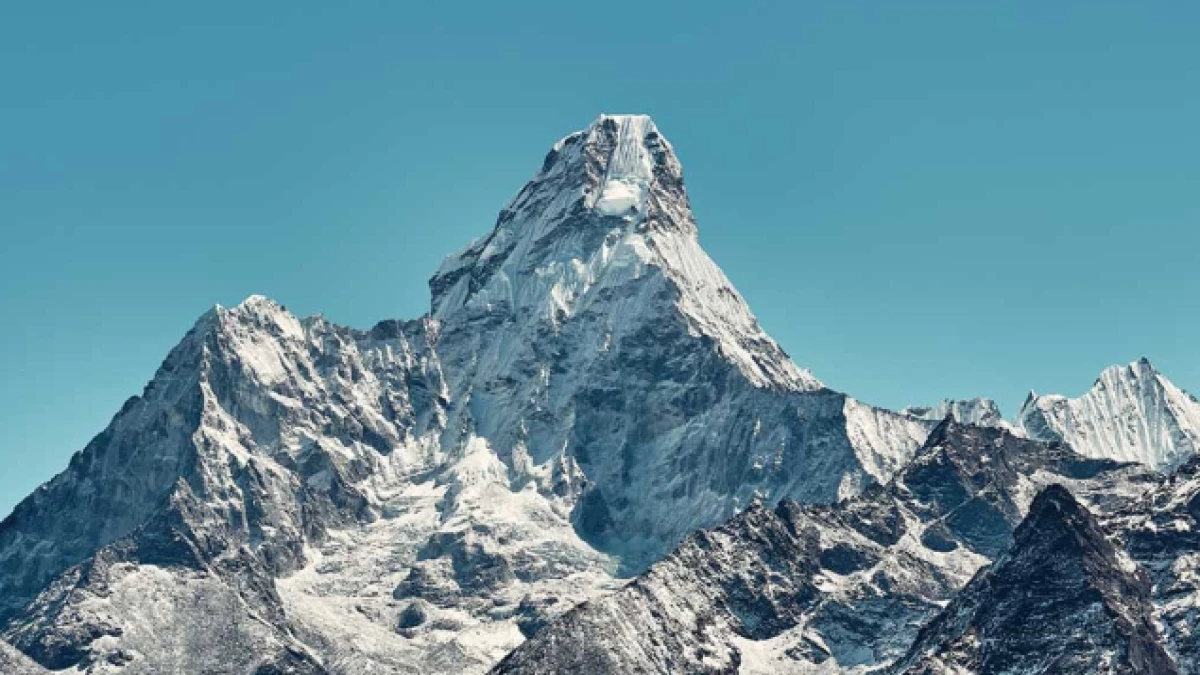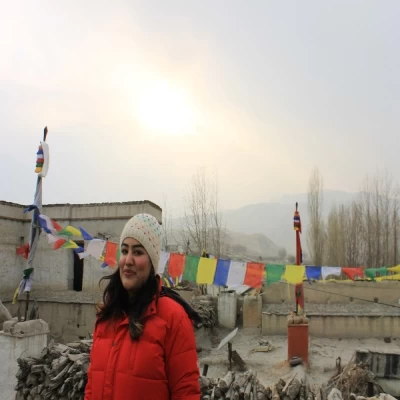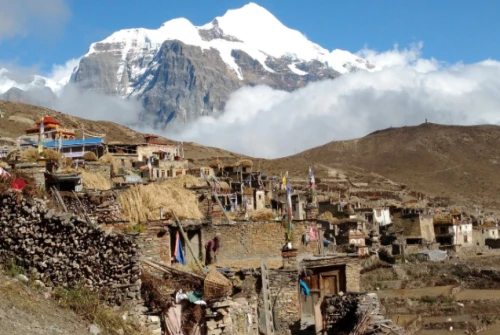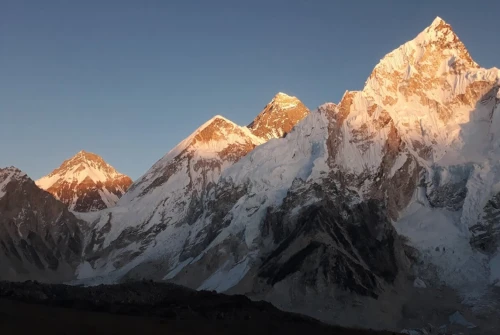Understanding the Ama Dablam Climbing Season
When planning an Ama Dablam expedition, timing represents one of the most critical decisions we must make. This magnificent peak, standing at 6,812 meters in the heart of the Khumbu region, demands careful consideration of weather patterns, temperature fluctuations, and overall climbing conditions. We recognize that selecting the optimal climbing window can mean the difference between a successful summit and a potentially dangerous attempt.
The Ama Dablam climbing season traditionally aligns with two distinct periods throughout the year, each offering unique advantages and challenges that we must carefully evaluate based on our experience level, physical preparation, and risk tolerance.
Spring Season: The Best Climbing Window (April to May)
Why Spring Represents the Best Time for Ama Dablam
The spring climbing season from mid-April through May stands as the most popular and arguably the best time to attempt an Ama Dablam expedition. During these months, we experience the most stable weather, with longer daylight hours and relatively predictable atmospheric patterns that create ideal conditions for technical climbing.
Temperature conditions during spring typically range from -10°C to -20°C at higher camps, which, while challenging, remain within manageable parameters for properly equipped climbers. The jet stream shifts northward during this period, reducing the likelihood of extreme wind conditions that can plague the mountain during other seasons.
Spring Weather Patterns and Climbing Conditions
We observe that spring weather in the Khumbu provides several distinct advantages. The monsoon season has not yet arrived, meaning precipitation remains relatively minimal. Clear skies dominate the forecast, offering spectacular visibility and safer climbing conditions. The snow consolidates well during this period, creating more stable routes and reducing avalanche risk on critical sections of the climb.
The acclimatization process benefits significantly from spring conditions. Warmer base camp temperatures allow for better rest and recovery between rotation climbs. We find that climbers maintain better physical condition and mental alertness when not constantly battling extreme cold at lower elevations.
Autumn Season: The Alternative Premium Window (October to November)
Post-Monsoon Advantages for Ama Dablam Expeditions
The autumn climbing season, spanning from late September through November, represents our second recommended window for Ama Dablam attempts. Following the monsoon retreat, the atmosphere clears dramatically, often providing even better visibility than spring. The air becomes crisp and clean, and the freshly fallen snow from the monsoon creates pristine climbing conditions on the upper mountain.
Weather stability in autumn rivals that of spring, though we typically experience colder temperatures overall. The jet stream begins its southward migration during this period, but early autumn often provides a sweet spot before the harshest winter conditions establish themselves.
Comparing Autumn to Spring Conditions
While both seasons offer excellent climbing opportunities, we note several distinctions. Autumn temperatures run approximately 5-10 degrees colder than spring at equivalent elevations. This necessitates more robust gear choices and greater attention to cold-weather management strategies.
The climbing community tends to be smaller in autumn compared to the bustling spring season. For teams seeking a less crowded experience with potentially more flexibility on the mountain, autumn presents an attractive alternative. Route fixing proceeds efficiently, and we often encounter shorter queues at technical sections.
Winter Expeditions: For the Bold and Experienced (December to February)
Understanding Winter Challenges on Ama Dablam
We must emphasize that winter climbing on Ama Dablam represents an entirely different proposition compared to standard season attempts. Temperatures plummet to -30°C or lower at high camps, and sustained high winds create brutal conditions that test even the most experienced mountaineers.
Winter expeditions require exceptional technical skill, superior physical conditioning, and extensive high-altitude experience. The margin for error narrows considerably, and the objective dangers multiply. However, for elite climbers seeking ultimate challenges, winter offers unparalleled adventure and virtually empty routes.
Why We Generally Advise Against Winter Attempts
The risk-reward calculation for winter Ama Dablam expeditions weighs heavily toward risk for most climbers. Frostbite danger increases exponentially, rescue operations become more complicated, and weather windows narrow dramatically. We recommend winter attempts only for climbers with multiple successful 6,000+ meter ascents and proven experience in extreme cold environments.
Monsoon Season: Why We Avoid June to September
The Perils of Monsoon Climbing
The monsoon period from June through September represents the least favorable time for Ama Dablam expeditions. Heavy precipitation, unstable weather, reduced visibility, and dramatically increased avalanche risk make climbing exceptionally dangerous during these months.
Objective hazards multiply during the monsoon season. Snow accumulation becomes unpredictable, ice conditions deteriorate rapidly with temperature fluctuations, and the mountain sheds loose snow regularly. Additionally, the approach trek becomes treacherous with leeches, slippery trails, and frequent flight cancellations disrupting logistics.
Detailed Monthly Breakdown for Optimal Planning
March: Pre-Season Preparation
Early March sees expedition teams beginning to arrive in Nepal. We use this time for final preparations, gear checks, and initial acclimatization treks. Weather remains variable with occasional snowfall, but conditions steadily improve as the month progresses.
April: Prime Spring Window Opens
Mid to late April represents the true opening of prime climbing season. Base camp is established fully, route fixing commences, and weather patterns stabilize. We recommend targeting summit pushes for late April, though this requires aggressive acclimatization schedules.
May: Peak Spring Conditions
Early to mid-May typically offers the absolute best conditions for Ama Dablam. Weather reaches maximum stability, temperatures moderate slightly, and snow conditions optimize. Most successful spring summits occur during this window.
October: Autumn Season Begins
Early October marks the beginning of the autumn season, though monsoon remnants occasionally linger. Mid to late October provides increasingly stable conditions as post-monsoon weather fully establishes.
November: Late Autumn Opportunities
Early November extends the autumn window, though temperatures begin dropping more noticeably. Late November approaches winter conditions and represents the practical end of the standard climbing season.
Factors Beyond Season Selection
Personal Preparation and Experience Requirements
Regardless of season choice, we emphasize that personal readiness trumps all other considerations. Ama Dablam demands excellent physical fitness, proven technical climbing skills including rock, ice, and mixed terrain proficiency, and substantial high-altitude experience.
Expedition Duration and Timeline Planning
A complete Ama Dablam expedition typically requires 25-30 days from Kathmandu departure to return. This includes trekking to base camp, acclimatization rotations, weather waiting periods, summit attempt, and descent. We must build adequate buffer time into our scheduling to accommodate weather delays and proper acclimatization.
Commercial vs. Independent Expeditions
Commercial expeditions operate exclusively during the spring and autumn seasons with fixed departure dates. Independent teams gain more flexibility but assume greater logistical responsibility. Season selection may depend partly on the chosen expedition style.
Making Your Final Decision
Evaluating Your Priorities
When determining the best time for your Ama Dablam expedition, we recommend evaluating several key factors: your cold tolerance, preference for crowds versus solitude, schedule flexibility, and overall mountaineering experience level.
Our Professional Recommendation
For most climbers attempting Ama Dablam for the first time, we strongly recommend the spring season, specifically late April through mid-May. This window provides the optimal balance of weather stability, manageable temperatures, established infrastructure, and reasonable climbing conditions.
Experienced mountaineers comfortable with colder conditions and seeking fewer crowds should consider early to mid-October as an excellent alternative that often delivers superior visibility and pristine snow conditions.
Conclusion: Timing Your Ama Dablam Success
The best time to trek and climb Ama Dablam ultimately depends on individual circumstances, but the spring and autumn seasons clearly stand as the premier windows for this spectacular expedition. By carefully selecting our timing, preparing thoroughly, and respecting the mountain's formidable challenges, we position ourselves for the greatest likelihood of safe and successful summit achievement on one of the Himalayas' most beautiful and technical peaks.
1. What is the absolute best time to climb Ama Dablam?
Mid-April to mid-May is the absolute best time. This spring window delivers the most stable weather, manageable temperatures (-15°C to -20°C), and consolidated snow. The jet stream shifts north, creating reliable summit windows with longer daylight hours and the highest success rates.
2. Is autumn a good alternative to spring for Ama Dablam?
Yes, October to mid-November is excellent. Autumn offers crystalline visibility surpassing spring, stable 7-10 day weather windows, and pristine snow quality. It's 5-10°C colder but rewards climbers with fewer crowds, superior ice conditions, and spectacular views.
3. Why should we avoid winter for Ama Dablam expeditions?
Winter is life-threatening. December to February brings -35°C temperatures, 100+ km/h winds, and wind chills below -50°C. Weather windows shrink to 1-3 unpredictable days. Brittle ice, unstable mushroom ridge, and limited rescue options make winter far too dangerous.
4. What makes the monsoon season completely unfavorable for Ama Dablam?
Monsoon creates impossible conditions. June to September brings daily heavy precipitation, extreme avalanche danger, and perpetually poor visibility. Muddy trails with leeches, flight cancellations, saturated base camps, and death-trap technical sections make monsoon absolutely unsuitable.
5. How do spring and autumn temperatures compare on Ama Dablam?
Autumn is 5-10°C colder. Spring: -15°C to -20°C at Camp 3. Autumn: -20°C to -25°C or lower. Autumn requires warmer gear but creates superior ice conditions and prevents wet-snow avalanches. Spring offers more comfortable base camp recovery.
6. Which season offers better weather stability for summit attempts?
Both are excellent, with slight differences. Spring provides predictable daily patterns with 6-8-hour summit windows. Autumn delivers longer consecutive clear stretches (7-10 days) but less predictable timing. Spring suits first-timers; autumn rewards experienced teams.
7. Are there fewer climbers on Ama Dablam in autumn compared to spring?
Yes, 40-60% fewer climbers in autumn. Spring sees crowded fixed lines and camp competition. Autumn offers less congested routes, flexible scheduling, reduced bottlenecks, and intimate mountain experiences. However, spring's larger community provides enhanced safety networks.
8. Can we attempt Ama Dablam in March or early June?
No, avoid these transition periods. March has unstable late-winter conditions with brutal cold and unconsolidated snow. Early June risks sudden monsoon arrival, trapping teams mid-mountain. Wait until mid-April or October for predictable, stable conditions.
9. What about climbing Ama Dablam in late November or early December?
Risky transition period. While occasionally climbable, late November to early December brings rapidly deteriorating stability, plummeting temperatures, and increasing winds. Weather windows shrink unpredictably. Complete autumn expeditions by mid-November before winter eliminates favorable conditions.
10. Should first-time Ama Dablam climbers choose spring or autumn?
First-timers should choose spring. Warmer temperatures reduce stress, a larger climbing community enhances safety, well-established infrastructure functions optimally, and predictable weather patterns aid decision-making. Commercial operators offer more spring options. Spring provides the best environment for successful first ascents





